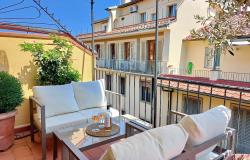Introduction
Today’s language lesson is about how to use the passive form in Italian. There are two forms of verbs: passive and active. An active verb form is when the subject does the verb and the object receives it:
We make pasta – Facciamo la pasta
In the passive, it is the other way round. The subject receives the action. You can see this in the sentence here:
Pasta is made by us – La pasta è fatta da noi
Here is another example:
Cinzia scrive la lettera – Cinzia writes the letter (active)
La lettera è scritta da Cinzia – The letter is written by Cinzia (passive)
In the active voice it is clear who is doing the action, but in the passive the subject is often left out. For example:
Il lavoro è fatto – The work is done
Quando viene mandato? – When is it sent?
Why use the passive?
We use the passive when we want to focus on the person or thing affected by the action, when the action is more important than who is doing the action, or if we don’t know who is responsible for the action. These are all examples of passive sentences:
· The girl has been bitten
· We have been invited to an event
· My bag has been stolen
How to form the passive: Essere + past participle
In English we use the verb ‘to be’ with a past participle (bitten, invited, stolen) to make the passive and we can do the same in Italian, using ‘essere’ and a past participle. We can also use the verb ‘venire’ (to come) instead of ‘essere’ to form passives. In both cases, the past participle has to agree in gender and number with the subject of the sentence.
Il risotto è servito come primo piatto – Risotto is served as a first course
La finestra viene chiusa – The window is closed
Io sono amato – I am loved
Questo film viene guardato in tutto il mondo – This film is watched throughout the world
La lettera viene spedita – The letter is sent
When you want to say who is responsible for the action, you use ‘da’ (by):
La pizza è preparata da Michele – The pizza is prepared by Michele
Il libro è scritto da mio fratello – The book is written by my brother
La macchina viene usata da tutti – The machine is used by all
La canzone è cantata da noi – The song is sung by us
Il giornale è letto da molte persone – The newspaper is read by many people
Alternatives to the passive
Passives are used much more widely in English than they are in Italian so there are alternatives we can use. For example, ‘mi hanno detto’ is a better translation of ‘I was told’ than using a passive form. Here are some similar constructions:
Mi hanno detto di venire – I was told to come / they told me to come
Mi hanno dato le chiavi – I was given the keys / they gave me the keys
Mi hanno rubato il documento – My ID was stolen / they stole my ID












